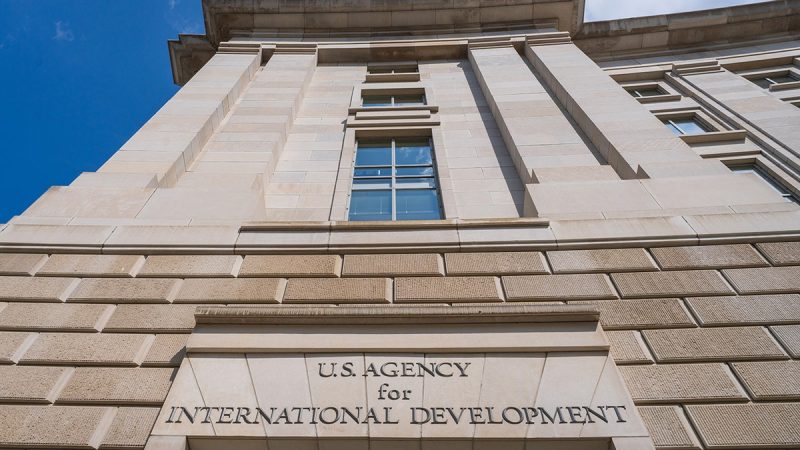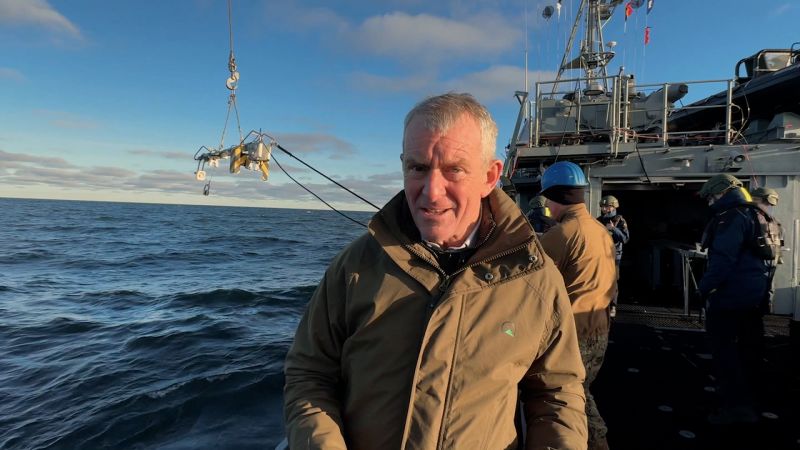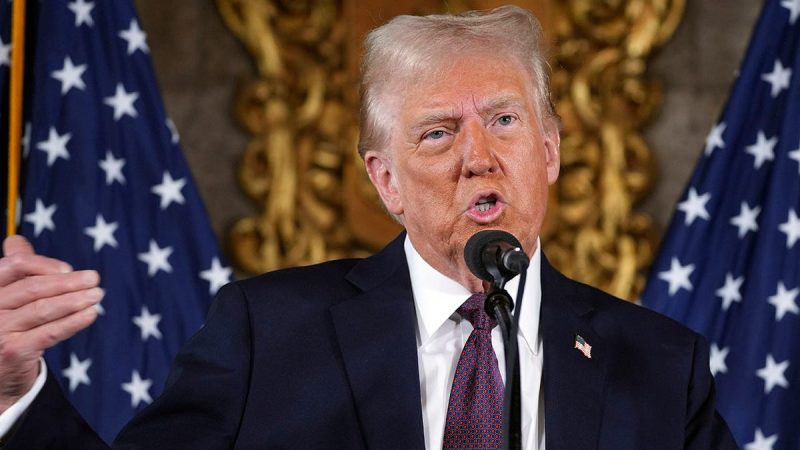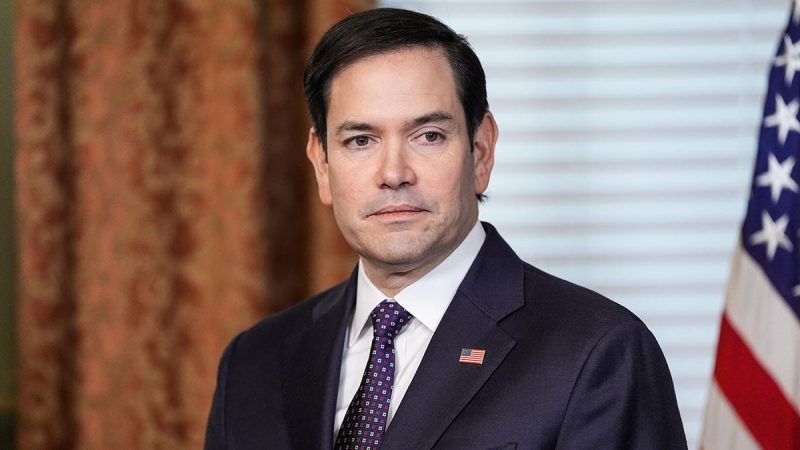
Every morning at 7:30 a.m. sharp, a race begins on the outskirts of Chengdu, a sprawling Chinese metropolis known for its spicy hotpot, old tea houses and the country’s most beloved animal – giant pandas.
From the gates of the famed Chengdu Panda Base, fans run to the leafy “villa” of its celebrity resident: Hua Hua, China’s most popular panda. Among them is A’Qiu, who rents an apartment nearby and shares his bedroom with dozens of stuffed black and white teddy bears.
The 32-year-old bikes to the panda base every morning to see Hua Hua and film the celebrity bear for his 10,000 followers on Douyin, TikTok’s sister app. In the summer, he gets up as early as 3 a.m. to be at the front of the line. “Just seeing her face makes me feel incredibly happy,” he said.
Rare, fluffy and irresistibly cute, pandas are adored across the globe. Yet Hua Hua’s star power is something else entirely. The 4-year-old is so popular that only 30 people are allowed to admire her for a mere three minutes each before being ushered out by security guards. On a busy weekend or holiday, tens of thousands of visitors from across China spend more than two hours in line just to catch a glimpse of her.
In Chengdu, Hua Hua’s face is everywhere – in souvenir shops, cafes, post offices and on billboards. She also enjoys a massive following on Chinese social media, where her videos have racked up billions of views.
Hua Hua’s unprecedented popularity epitomizes a new wave of “pandamonium” that is sweeping across China, following a decades-long government effort to transform the giant panda from a little-known animal into a cultural icon, a national symbol and a potent tool of diplomacy.
But the success of the pandas’ rebranding has created an unexpected challenge for Beijing, as it seeks to balance its use of the animals for much-needed soft power abroad against the demands of an adoring public to protect their “national treasure” at all costs.
While many Chinese are proud to share pandas with the world, some – including a vocal fringe group of online influencers – oppose sending their beloved bears to the United States and other “unfriendly” countries, ostensibly for fear they’ll be mistreated.
The group’s howls of protest could be heard last year outside the Dujiangyan Panda Base, the temporary home of two pandas that were sent to the US in a carefully orchestrated process cloaked in secrecy to avoid unscripted attention.
Some animal rights activists and panda fans have also targeted researchers and scientists involved in China’s panda breeding program, prompting the government to signal it will no longer tolerate any attempt to tarnish the conservation success story of the country’s cuddly soft power asset.
Pandas once roamed a vast swath of China, along with parts of northern Myanmar and Vietnam, but human encroachment and climate change shrank the habitat of the bamboo-munching bears to just six mountain ranges above the Sichuan basin, deep in China’s hinterland.
Hailed in imperial times as the “land of heavenly abundance,” Sichuan is now better known as the “hometown of pandas.” The mountainous province boasts a latticework of panda nature reserves and breeding centers, all built in recent decades as China – and the world – raced to save the multimillion years old “living fossil” from extinction.
The provincial capital, Chengdu, home to 21 million people, sits at the foot of snow-capped mountains with misty old-growth forests where wild pandas still roam.
The city’s panda breeding base is the largest in the country, housing more than 240 bears – or a third of the world’s captive panda population. The sprawling facility draws up to 11 million visitors a year, on par with Shanghai Disneyland.
“It’s a symbol of China. All Chinese people want to see it in person,” said a visitor who traveled 800 miles (1,300 kilometers) to Chengdu and lined up at 6 a.m. to see the pandas. But the giant panda hasn’t always been an emblem of the Chinese nation.
Throughout much of history, these elusive bears left little impression on Chinese literature and art, let alone holding any cultural significance like the dragon, the tiger or the crane.
The obscure panda only emerged as a national icon well after the founding of the People’s Republic in 1949, according to E. Elena Songster, a historian and author of “Panda Nation: The Construction and Conservation of China’s Modern Icon.”
Unique, lovable and free of historical baggage, the black and white bear was deemed an ideal symbol for the young communist nation to shape its image and identity.
Even then, it took years for the panda to gain widespread recognition and adoration in an impoverished country.
Liu Xuehua, an ecologist who dedicated her career to preserving panda habitat, never knew about these bears growing up in a small industrial city in southeastern China in the 1960s and 1970s. “The media wasn’t so developed, we spent a lot of time studying at school and there weren’t that many zoos in the provinces,” she recalled.
Nowadays, it’s virtually impossible for a Chinese child to grow up without knowing pandas – the “national treasure” brought back from the brink of extinction.
They are featured in cartoons, textbooks, toy stores, and – with their captive population growing from about 100 to more than 700 in a span of decades – can now be seen in zoos across nearly every province in China.
The wild panda population has also rebounded from a low in the 1980s, reaching an estimated 1,864 by the last official count in 2014. Two years later, the giant panda was downgraded from “endangered” to “vulnerable” on the global red list of threatened species.
Pandas are not only a success story for China in wildlife conservation – they’re also a major soft power asset.
Soft power is something China has struggled with in recent decades even as it propelled itself to become the world’s second-largest economy. Japanese fashion, films, anime, manga and video games have long captivated fans across the globe. More recently, the “Korean wave” has taken the world by storm, setting off a craze for K-pop, K-drama, K-beauty, K-everything.
For China, an authoritarian state where cultural czars dictate the terms of artistic creations, the most successful tool to win hearts and minds worldwide has been – and remains – its monopoly on pandas.
For more than half a century, Beijing has dispatched these charismatic animals overseas to shore up alliances, mend estranged ties and court new partners.
Pandas have been a cornerstone of US-China engagement ever since a pair arrived in Washington in 1972, following President Richard Nixon’s ice-breaking trip to the communist nation during the Cold War.
But relations between the US and China, the world’s two most powerful nations, have sunk to their lowest ebb in decades, strained by spiraling competition over technology, military, geopolitics and more.
Panda diplomacy has been a small bright spot in an otherwise darkened landscape. Last June, China sent the San Diego Zoo the first pair of pandas to enter America in 21 years. A second pair, Bao Li and Qing Bao, made their public debut last Friday at the Smithsonian’s National Zoo after arriving in Washington in October.
“People want a good news story. They want something that shows we can be successful … in protecting the planet,” said Ellen Stofan, the undersecretary for science and research at the Smithsonian, in October as she watched pandas loll about at Wolong Shenshuping, a mountain-ringed breeding base where Bao Li and Qing Bao were born.
Yet even that rare bright spot in relations couldn’t fully escape the shadow of distrust and animosity between the two countries – sentiments that some fear will only deepen now that President Donald Trump is back in the White House with a cabinet staffed with China hawks.
As the Chinese public grows fonder – and perhaps more protective – of the pandas, some online influencers have expressed concerns about the bears’ welfare abroad, alleging that American zoos have mistreated China’s “national treasures.”
Such claims have often been fueled by the kind of nationalistic, anti-US sentiment fanned by state media. They have gained traction on the Chinese internet in recent years, especially following controversy over the health of Ya Ya, a panda previously on loan to the Memphis Zoo.
In 2023, Ya Ya’s skinny looks and scraggly fur spurred concerns for her health, especially after her male partner, Le Le, died just months before the pair were scheduled to return to China. Chinese social media was awash with wild allegations that the Memphis Zoo had mistreated its pandas as a deliberate snub to China.
Zoo officials repeatedly dismissed such accusations, attributing Ya Ya’s fur loss to a genetic skin disease – a conclusion shared by Chinese experts dispatched to Memphis to examine the panda.
The backlash didn’t derail the panda loan program, which generates an annual fee of about US$1 million per pair of bears for China, but it seems to have complicated matters for everyone involved.
Transporting pandas across the Pacific Ocean has always been a logistically complex undertaking that requires months of planning. Now, authorities must navigate added layers of political sensitivity and secrecy.
The departure date of Bao Li and Qing Bao was kept strictly under wraps, only revealed to the public by the Chinese government once their chartered plane was in the air.
Once held at panda bases, the invitation-only official send-off ceremonies now take place in hotel conference rooms away from crowds of tourists.
A day before Bao Li and Qing Bao’s send-off, Chinese officials rushed to change the event’s location to a more secluded hotel, likely to prevent a repeat of scenes in June, when a small group of protesters gathered outside the Dujiangyan panda base with banners opposing their transfer.
Local journalists who have reported on pandas for years said the crowds were part of a recent trend of “extreme panda fans” protesting the animals being sent overseas. Some even tried to stop their journey by bombarding panda experts, officials and government agencies with angry phone calls. “They believe they’re being very patriotic,” one of the journalists said.
The Chinese public’s growing love affair with the bears has also brought more scrutiny to the treatment of pandas in breeding centers and zoos inside China.
“So many fans are watching the live panda cams. And the Chinese institutions are extremely careful in terms of what kind of content they provide and how they’re being perceived by the public. I think (that’s) becoming more of a norm right now,” said Qiongyu Huang, a wildlife biologist at the Smithsonian who has worked with Chinese partners on pandas.
A major point of contention centers on the artificial breeding of pandas in captivity.
Some panda advocates have criticized the use of electroejaculation, a common technique for collecting sperm from mammals, especially on cattle farms. It involves inserting an electric probe with mild currents into the rectum of a male under anesthesia to stimulate ejaculation — a process that some critics say is cruel and harmful. (The procedure is also used on humans when a patient cannot ejaculate on their own due to a spine injury, nerve problem or other condition.)
To address concerns, the Chengdu breeding base conducted a public experiment allowing panda fans to experience the strength of the electric currents firsthand. Visitors were invited to touch an electric probe set to the same voltage used on pandas, and according to the center’s statement, none reported feeling any noticeable sensations.
But criticism and questions have persisted.
Wang Donghui, a scientist at the Chengdu base, is part of a research team that developed a new technique to freeze panda semen to improve its viability – and increase the success rate of artificial insemination. The breakthrough was widely hailed in state media at the time and earned him the nickname “Doctor Panda.” However, Wang now avoids discussing the topic — or anything related to panda sperm and artificial insemination. “We’ve been attacked,” he explained off camera.
That sense of nervousness is palpable at other panda bases too. Some staff spoke of concerns that panda experts and caretakers have become frequent targets of online bullying and phone harassment; one said, only half-jokingly, that they now work in a “high-risk industry.”
The intensity of online harassment has “made it difficult for some experts to carry out their research work properly,” Hou Rong, a leading researcher and deputy director of the Chengdu base, told the state-run People’s Daily.
China’s captive breeding program had a terrible start, its early years marred by failures at both artificial breeding and keeping cubs alive.
An official at the Chengdu base recalled in an interview with state media that in 1996, whenever scientists tried to collect sperm from pandas, the bears would end up with blood in their stools – a condition that persisted for six months at a time. “The situation at the time was extremely dire, none of the captive male pandas could produce any semen,” the official was quoted as saying.
Panda reproduction in captivity is notoriously difficult. Female pandas are in heat only once a year for about 24 to 72 hours. They’re also very picky about who they choose to mate with. And when they finally give birth, newborn pandas are extremely fragile. In the 1990s, the survival rate of cubs under human care at some breeding centers was only 10%, according to state media.
But these hurdles had been largely overcome by the 2000s with the help of American and European scientists, said Wu Honglin, the deputy director of the Shenshuping base.
“With a deeper understanding and research into pandas, along with breakthroughs in reproductive technology, it’s no longer a challenge,” Wu said. And the large captive population offers females more options. “In recent years, we have relied entirely on natural mating,” he added.
China’s breeding centers now boast cub survival rates well above 90%, and every year, dozens of new cubs are born.
Melissa Songer, a conservation biologist at the Smithsonian, said China learned from past lessons. “It’s not that there’s never been a mistake or that things couldn’t get better, but I think things have gotten so much better so quickly,” she said.
Proponents of the captive breeding program say it serves as vital insurance against extinction.
The end goal is to return the pandas to the wild, and a sizable captive population is the foundation for that long and challenging effort, said Huang, the ecologist at the Smithsonian.
Deep in the misty mountains above the Shenshuping breeding site lies the Tiantaishan rewilding base, where select panda cubs are prepared for life in the wild.
Here, bamboo trees often have messy, broken branches – an unmistakable sign of feeding for the trained eye.
When the cubs reach 1 year old, they are brought into the base’s wild enclosures with their mothers to learn vital survival skills such as foraging, finding water, and dealing with other wildlife like black bears and wild boars.
If deemed ready, the youngster will be released into the wilderness at around 2 years old to face all its beauty, rawness, and dangers on its own. Many don’t pass the strict qualification process and spend the rest of their lives in captivity.
Unlike pandas born in zoos, these rewilding candidates are born in large, semi-natural enclosures, raised entirely by their mothers, with minimal human contact.
Staff have come up with an intriguing way to shield the bears from people – the panda suit.
Keepers here only ever interact with their animal charges while dressed in full-body panda outfits, carefully scented with panda urine or feces.
“The goal isn’t to trick the cubs into thinking we’re pandas,” explained Zhang Dalei, a keeper with over a decade of experience in the program, “but to ensure they don’t develop a dependency on humans.”
The work is not without its risks and at Tiantaishan, Zhang has witnessed a lesser-known, aggressive side of these cuddly bears.
In 2016, a keeper wearing a panda suit was attacked and mauled by a protective mother bear who mistook him as an intruder on her territory. When Zhang rushed to the scene, he found his colleague’s wrist bones exposed, the costume soaked in blood. Though the keeper survived, the bear’s powerful jaws had shattered multiple bones and tendons in his arms and legs.
Rewilding carries substantial risks for its trainees, too.
China’s first attempt at releasing a panda into the wild in 2006 ended in tragedy when a 5-year-old bear, Xiang Xiang, was found dead in the snow less than a year later. He was believed to have fallen from height during a territorial fight with a wild male panda. The setback prompted the immediate suspension of the program.
Chinese researchers spent four years reflecting, learning, and refining their methods before restarting the training in its current form, where mother and cub learn to survive in the wild together. The next panda was released in 2012, and since then, 10 more have followed. One of them died six weeks after release, due to a bacterial infection, and at least two pandas perished during training, according to state media reports at the time.
Each failure and loss in China were met with fierce public backlash, and the pressure has likely led researchers to err on the side of caution in releasing more pandas, Huang said. “The progress has been slow because the species is so valuable, it’s like a treasure. Any misstep will have huge consequences in the public domain,” he said.
Habitat loss and fragmentation remain the biggest threat to wild pandas. By the early 2010s, some of China’s most prominent panda experts had warned that the success in breeding the bears in captivity had masked a critical conservation failure: the species’ rapidly vanishing natural habitat.
Over the past few decades, China has boosted the number of panda reserves from 12 to 67, but many are interspersed with villages and human infrastructure. This has confined many panda subpopulations to isolated patches of habitat carved by roads, railways, dams and farms, cutting them off from new bamboo forests and potential mates. Some groups comprise fewer than 10 individual bears.
Climate change is aggravating the problem. Studies show that a temperature rise of more than 3 degrees Celsius will result in mass death of bamboo, said Yang Hongbo, a researcher at the Chinese Academy of Sciences who focuses on panda habitat.
In 2021, China took a significant step by establishing the Giant Panda National Park, spanning three provinces and covering an area more than twice the size of Yellowstone. The park aims to link existing reserves and reconnect isolated subpopulations.
“It’s all about the habitat, ultimately, for supporting the wild pandas, for growing the wild population,” Songer said.
With enough habitat, the hope is that in the future, panda cubs can be trained in the location where they will eventually be released. “When they’re ready, we only need to remove the fences around their training sites,” said Zhang, the rewilding keeper. “It’s like choosing a home for them to settle into in advance.”
For now, the Chinese government remains committed to breeding pandas in captivity and loaning them to foreign zoos. It has also signaled that it will no longer tolerate overt opposition to “panda diplomacy,” and moved to contain the nationalist backlash.
In December, police in Dujiangyan arrested two online influencers for spreading false rumors about pandas being abused in the US and “inciting opposition” to the panda exchange program. (The suspects are also accused of raking in profits of more than $23,000 through live streaming and fundraising from their followers.) Since May last year, Sichuan authorities have arrested four groups of “extreme” animal rights activists accused of slandering and harassing Chinese panda experts.
Alongside the flurry of arrests intended to deter future “extreme” activism, authorities have ramped up efforts to counter negative opinions about the panda exchange program, although not everyone’s convinced.
A visitor to the Beijing Zoo described pandas as “indispensable” to China. Asked for his view about loaning pandas abroad, he replied with a laugh: “The fewer we send, the better.”
Back at the Chengdu panda base, Hua Hua, the 4-year-old celebrity panda, enjoyed her breakfast of bamboo shoots while the crowd oohed and aahed at her every move. The bear has become a national sensation for her unique looks: for many, she resembles a giant triangular rice ball when she sits.
Others love her chill vibes – a subject of envy for millions of young people struggling to find work in China’s slowing economy.
“She’s not competitive at all. We humans exhaust ourselves every day, longing to ‘lie flat’ and take it easy, but we can’t. Yet Hua Hua can,” said Deng Shoujuan, a staff member at the base.
Qi Qi, a 36-year-old Chengdu local who has visited the base more than 100 times in the past year, is in favor of sending pandas abroad.
“China is the homeland of pandas, but everyone should be able feel the warmth and joy they bring. The giant panda is a gift to humanity, a gift to the world,” she said.
But A’Qiu, the fan who bikes to the base each day to film its most famous resident, says there’s one panda he never wants to see go overseas.
“Don’t even think about Hua Hua,” he said.
This post appeared first on cnn.com























